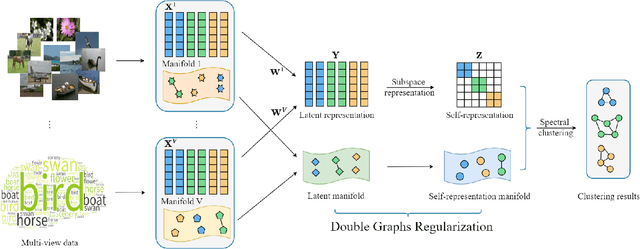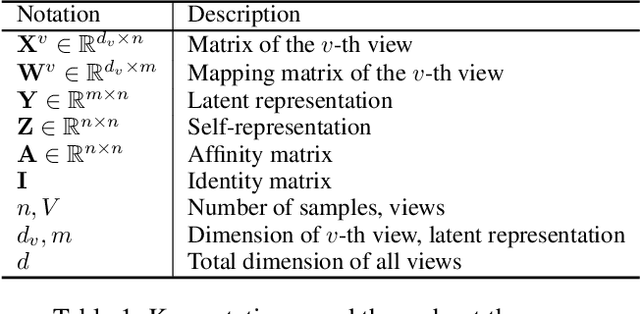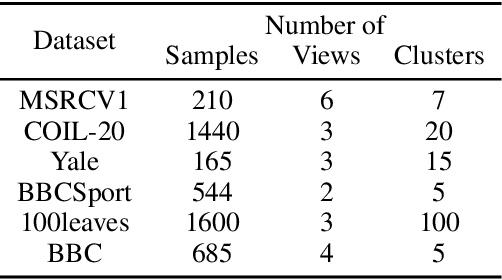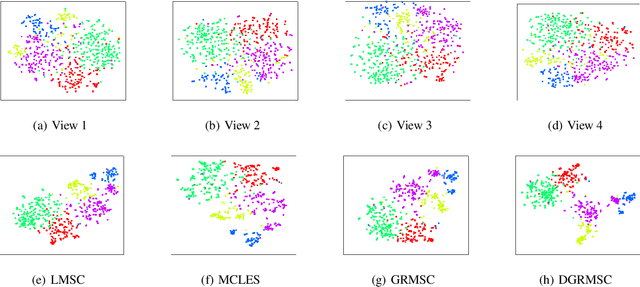Yutao Hu
Rethinking the Detail-Preserved Completion of Complex Tubular Structures based on Point Cloud: a Dataset and a Benchmark
Aug 25, 2025



Abstract:Complex tubular structures are essential in medical imaging and computer-assisted diagnosis, where their integrity enhances anatomical visualization and lesion detection. However, existing segmentation algorithms struggle with structural discontinuities, particularly in severe clinical cases such as coronary artery stenosis and vessel occlusions, which leads to undesired discontinuity and compromising downstream diagnostic accuracy. Therefore, it is imperative to reconnect discontinuous structures to ensure their completeness. In this study, we explore the tubular structure completion based on point cloud for the first time and establish a Point Cloud-based Coronary Artery Completion (PC-CAC) dataset, which is derived from real clinical data. This dataset provides a novel benchmark for tubular structure completion. Additionally, we propose TSRNet, a Tubular Structure Reconnection Network that integrates a detail-preservated feature extractor, a multiple dense refinement strategy, and a global-to-local loss function to ensure accurate reconnection while maintaining structural integrity. Comprehensive experiments on our PC-CAC and two additional public datasets (PC-ImageCAS and PC-PTR) demonstrate that our method consistently outperforms state-of-the-art approaches across multiple evaluation metrics, setting a new benchmark for point cloud-based tubular structure reconstruction. Our benchmark is available at https://github.com/YaoleiQi/PCCAC.
Cardiac-CLIP: A Vision-Language Foundation Model for 3D Cardiac CT Images
Jul 29, 2025Abstract:Foundation models have demonstrated remarkable potential in medical domain. However, their application to complex cardiovascular diagnostics remains underexplored. In this paper, we present Cardiac-CLIP, a multi-modal foundation model designed for 3D cardiac CT images. Cardiac-CLIP is developed through a two-stage pre-training strategy. The first stage employs a 3D masked autoencoder (MAE) to perform self-supervised representation learning from large-scale unlabeled volumetric data, enabling the visual encoder to capture rich anatomical and contextual features. In the second stage, contrastive learning is introduced to align visual and textual representations, facilitating cross-modal understanding. To support the pre-training, we collect 16641 real clinical CT scans, supplemented by 114k publicly available data. Meanwhile, we standardize free-text radiology reports into unified templates and construct the pathology vectors according to diagnostic attributes, based on which the soft-label matrix is generated to supervise the contrastive learning process. On the other hand, to comprehensively evaluate the effectiveness of Cardiac-CLIP, we collect 6,722 real-clinical data from 12 independent institutions, along with the open-source data to construct the evaluation dataset. Specifically, Cardiac-CLIP is comprehensively evaluated across multiple tasks, including cardiovascular abnormality classification, information retrieval and clinical analysis. Experimental results demonstrate that Cardiac-CLIP achieves state-of-the-art performance across various downstream tasks in both internal and external data. Particularly, Cardiac-CLIP exhibits great effectiveness in supporting complex clinical tasks such as the prospective prediction of acute coronary syndrome, which is notoriously difficult in real-world scenarios.
RobuSTereo: Robust Zero-Shot Stereo Matching under Adverse Weather
Jul 02, 2025Abstract:Learning-based stereo matching models struggle in adverse weather conditions due to the scarcity of corresponding training data and the challenges in extracting discriminative features from degraded images. These limitations significantly hinder zero-shot generalization to out-of-distribution weather conditions. In this paper, we propose \textbf{RobuSTereo}, a novel framework that enhances the zero-shot generalization of stereo matching models under adverse weather by addressing both data scarcity and feature extraction challenges. First, we introduce a diffusion-based simulation pipeline with a stereo consistency module, which generates high-quality stereo data tailored for adverse conditions. By training stereo matching models on our synthetic datasets, we reduce the domain gap between clean and degraded images, significantly improving the models' robustness to unseen weather conditions. The stereo consistency module ensures structural alignment across synthesized image pairs, preserving geometric integrity and enhancing depth estimation accuracy. Second, we design a robust feature encoder that combines a specialized ConvNet with a denoising transformer to extract stable and reliable features from degraded images. The ConvNet captures fine-grained local structures, while the denoising transformer refines global representations, effectively mitigating the impact of noise, low visibility, and weather-induced distortions. This enables more accurate disparity estimation even under challenging visual conditions. Extensive experiments demonstrate that \textbf{RobuSTereo} significantly improves the robustness and generalization of stereo matching models across diverse adverse weather scenarios.
Flow-Anything: Learning Real-World Optical Flow Estimation from Large-Scale Single-view Images
Jun 09, 2025Abstract:Optical flow estimation is a crucial subfield of computer vision, serving as a foundation for video tasks. However, the real-world robustness is limited by animated synthetic datasets for training. This introduces domain gaps when applied to real-world applications and limits the benefits of scaling up datasets. To address these challenges, we propose \textbf{Flow-Anything}, a large-scale data generation framework designed to learn optical flow estimation from any single-view images in the real world. We employ two effective steps to make data scaling-up promising. First, we convert a single-view image into a 3D representation using advanced monocular depth estimation networks. This allows us to render optical flow and novel view images under a virtual camera. Second, we develop an Object-Independent Volume Rendering module and a Depth-Aware Inpainting module to model the dynamic objects in the 3D representation. These two steps allow us to generate realistic datasets for training from large-scale single-view images, namely \textbf{FA-Flow Dataset}. For the first time, we demonstrate the benefits of generating optical flow training data from large-scale real-world images, outperforming the most advanced unsupervised methods and supervised methods on synthetic datasets. Moreover, our models serve as a foundation model and enhance the performance of various downstream video tasks.
Car-1000: A New Large Scale Fine-Grained Visual Categorization Dataset
Mar 16, 2025



Abstract:Fine-grained visual categorization (FGVC) is a challenging but significant task in computer vision, which aims to recognize different sub-categories of birds, cars, airplanes, etc. Among them, recognizing models of different cars has significant application value in autonomous driving, traffic surveillance and scene understanding, which has received considerable attention in the past few years. However, Stanford-Car, the most widely used fine-grained dataset for car recognition, only has 196 different categories and only includes vehicle models produced earlier than 2013. Due to the rapid advancements in the automotive industry during recent years, the appearances of various car models have become increasingly intricate and sophisticated. Consequently, the previous Stanford-Car dataset fails to capture this evolving landscape and cannot satisfy the requirements of automotive industry. To address these challenges, in our paper, we introduce Car-1000, a large-scale dataset designed specifically for fine-grained visual categorization of diverse car models. Car-1000 encompasses vehicles from 165 different automakers, spanning a wide range of 1000 distinct car models. Additionally, we have reproduced several state-of-the-art FGVC methods on the Car-1000 dataset, establishing a new benchmark for research in this field. We hope that our work will offer a fresh perspective for future FGVC researchers. Our dataset is available at https://github.com/toggle1995/Car-1000.
FCaS: Fine-grained Cardiac Image Synthesis based on 3D Template Conditional Diffusion Model
Mar 12, 2025Abstract:Solving medical imaging data scarcity through semantic image generation has attracted significant attention in recent years. However, existing methods primarily focus on generating whole-organ or large-tissue structures, showing limited effectiveness for organs with fine-grained structure. Due to stringent topological consistency, fragile coronary features, and complex 3D morphological heterogeneity in cardiac imaging, accurately reconstructing fine-grained anatomical details of the heart remains a great challenge. To address this problem, in this paper, we propose the Fine-grained Cardiac image Synthesis(FCaS) framework, established on 3D template conditional diffusion model. FCaS achieves precise cardiac structure generation using Template-guided Conditional Diffusion Model (TCDM) through bidirectional mechanisms, which provides the fine-grained topological structure information of target image through the guidance of template. Meanwhile, we design a deformable Mask Generation Module (MGM) to mitigate the scarcity of high-quality and diverse reference mask in the generation process. Furthermore, to alleviate the confusion caused by imprecise synthetic images, we propose a Confidence-aware Adaptive Learning (CAL) strategy to facilitate the pre-training of downstream segmentation tasks. Specifically, we introduce the Skip-Sampling Variance (SSV) estimation to obtain confidence maps, which are subsequently employed to rectify the pre-training on downstream tasks. Experimental results demonstrate that images generated from FCaS achieves state-of-the-art performance in topological consistency and visual quality, which significantly facilitates the downstream tasks as well. Code will be released in the future.
OmniMedVQA: A New Large-Scale Comprehensive Evaluation Benchmark for Medical LVLM
Feb 14, 2024



Abstract:Large Vision-Language Models (LVLMs) have demonstrated remarkable capabilities in various multimodal tasks. However, their potential in the medical domain remains largely unexplored. A significant challenge arises from the scarcity of diverse medical images spanning various modalities and anatomical regions, which is essential in real-world medical applications. To solve this problem, in this paper, we introduce OmniMedVQA, a novel comprehensive medical Visual Question Answering (VQA) benchmark. This benchmark is collected from 75 different medical datasets, including 12 different modalities and covering more than 20 distinct anatomical regions. Importantly, all images in this benchmark are sourced from authentic medical scenarios, ensuring alignment with the requirements of the medical field and suitability for evaluating LVLMs. Through our extensive experiments, we have found that existing LVLMs struggle to address these medical VQA problems effectively. Moreover, what surprises us is that medical-specialized LVLMs even exhibit inferior performance to those general-domain models, calling for a more versatile and robust LVLM in the biomedical field. The evaluation results not only reveal the current limitations of LVLM in understanding real medical images but also highlight our dataset's significance. Our dataset will be made publicly available.
Beyond One-to-One: Rethinking the Referring Image Segmentation
Aug 26, 2023



Abstract:Referring image segmentation aims to segment the target object referred by a natural language expression. However, previous methods rely on the strong assumption that one sentence must describe one target in the image, which is often not the case in real-world applications. As a result, such methods fail when the expressions refer to either no objects or multiple objects. In this paper, we address this issue from two perspectives. First, we propose a Dual Multi-Modal Interaction (DMMI) Network, which contains two decoder branches and enables information flow in two directions. In the text-to-image decoder, text embedding is utilized to query the visual feature and localize the corresponding target. Meanwhile, the image-to-text decoder is implemented to reconstruct the erased entity-phrase conditioned on the visual feature. In this way, visual features are encouraged to contain the critical semantic information about target entity, which supports the accurate segmentation in the text-to-image decoder in turn. Secondly, we collect a new challenging but realistic dataset called Ref-ZOM, which includes image-text pairs under different settings. Extensive experiments demonstrate our method achieves state-of-the-art performance on different datasets, and the Ref-ZOM-trained model performs well on various types of text inputs. Codes and datasets are available at https://github.com/toggle1995/RIS-DMMI.
Tiny LVLM-eHub: Early Multimodal Experiments with Bard
Aug 07, 2023Abstract:Recent advancements in Large Vision-Language Models (LVLMs) have demonstrated significant progress in tackling complex multimodal tasks. Among these cutting-edge developments, Google's Bard stands out for its remarkable multimodal capabilities, promoting comprehensive comprehension and reasoning across various domains. This work presents an early and holistic evaluation of LVLMs' multimodal abilities, with a particular focus on Bard, by proposing a lightweight variant of LVLM-eHub, named Tiny LVLM-eHub. In comparison to the vanilla version, Tiny LVLM-eHub possesses several appealing properties. Firstly, it provides a systematic assessment of six categories of multimodal capabilities, including visual perception, visual knowledge acquisition, visual reasoning, visual commonsense, object hallucination, and embodied intelligence, through quantitative evaluation of $42$ standard text-related visual benchmarks. Secondly, it conducts an in-depth analysis of LVLMs' predictions using the ChatGPT Ensemble Evaluation (CEE), which leads to a robust and accurate evaluation and exhibits improved alignment with human evaluation compared to the word matching approach. Thirdly, it comprises a mere $2.1$K image-text pairs, facilitating ease of use for practitioners to evaluate their own offline LVLMs. Through extensive experimental analysis, this study demonstrates that Bard outperforms previous LVLMs in most multimodal capabilities except object hallucination, to which Bard is still susceptible. Tiny LVLM-eHub serves as a baseline evaluation for various LVLMs and encourages innovative strategies aimed at advancing multimodal techniques. Our project is publicly available at \url{https://github.com/OpenGVLab/Multi-Modality-Arena}.
Double Graphs Regularized Multi-view Subspace Clustering
Sep 30, 2022



Abstract:Recent years have witnessed a growing academic interest in multi-view subspace clustering. In this paper, we propose a novel Double Graphs Regularized Multi-view Subspace Clustering (DGRMSC) method, which aims to harness both global and local structural information of multi-view data in a unified framework. Specifically, DGRMSC firstly learns a latent representation to exploit the global complementary information of multiple views. Based on the learned latent representation, we learn a self-representation to explore its global cluster structure. Further, Double Graphs Regularization (DGR) is performed on both latent representation and self-representation to take advantage of their local manifold structures simultaneously. Then, we design an iterative algorithm to solve the optimization problem effectively. Extensive experimental results on real-world datasets demonstrate the effectiveness of the proposed method.
 Add to Chrome
Add to Chrome Add to Firefox
Add to Firefox Add to Edge
Add to Edge